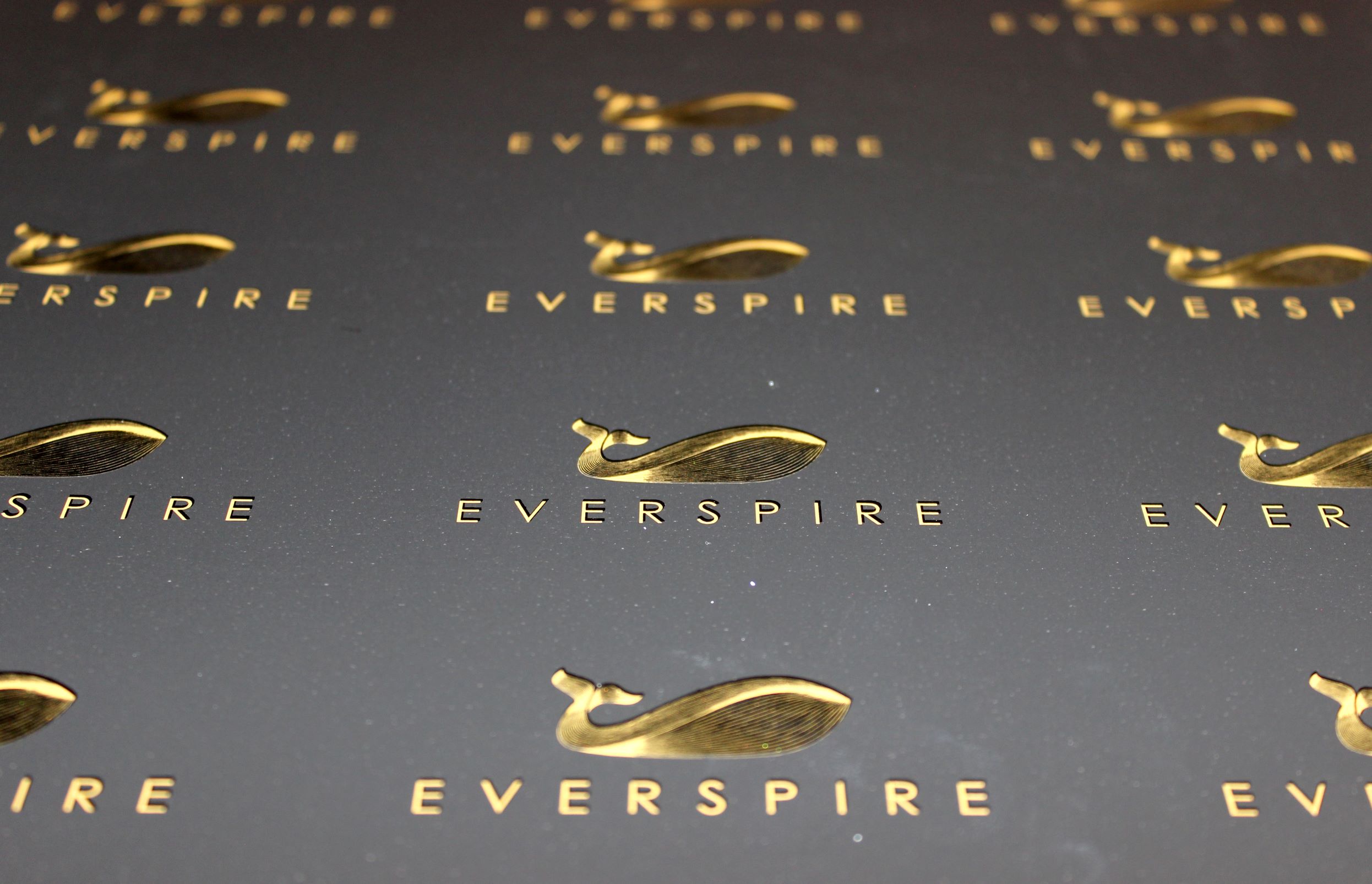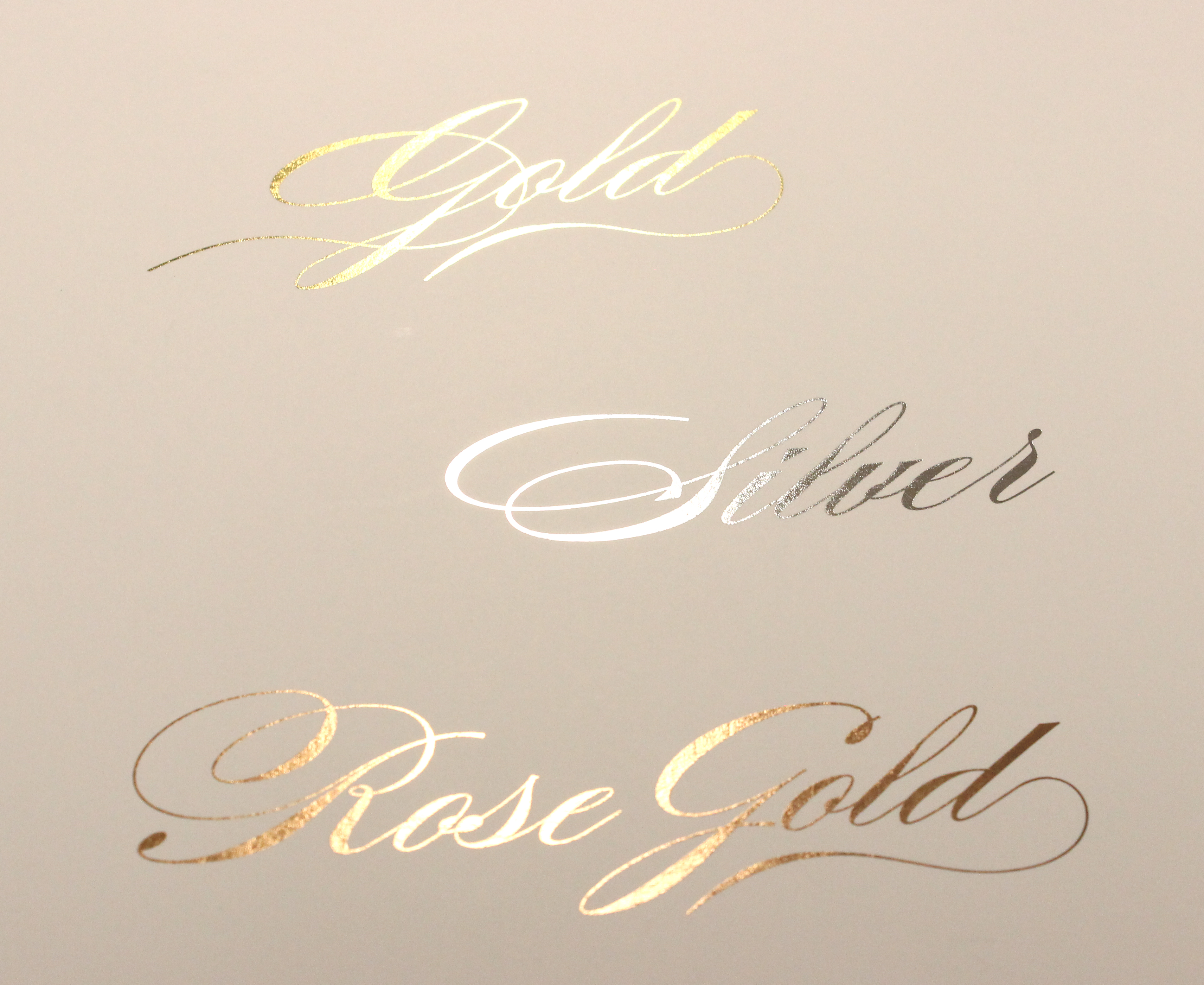Whether it's invitations, notebooks, planners, guest books, envelopes, or any other printed product; giving it a little extra 'pop' with foil can really bring the design together. It's the perfect finishing touch. If you have ever included foil on a product before, there is a good chance you have come across the terms flat foil and raised foil. Both create beautiful effects. Raised foil provides more dimmension and texture, whereas flat foil is almost flush with the surface it's printed upon.
ADDING TEXTURE
To get a better idea of how raised and flat are different, let's break down how each one is printed starting with raised. Using our MGI Jet Varnish 3D printer we print raised foil designs without the dyes or screens that older processes require. It's all digital. Making it cheaper and more convenient. It creates a beautiful 3-dimensional touch to products by laying multiple layers of foil and varnish. Because you can see and feel the foil and varnish on the products it leaves a lasting impression in your clients mind.

KEEPING IT SMOOTH
As mentioned above flat foil is exactly how it sounds; smoother and flatter while still adding a beautiful sheen. To create a flat foil print, first, we print the design through our Indigo printers with a black ink, similar to a marker. Next the print is fed through the MGI, which lays a thin layer of foil over the black ink with no varnish cover. That's how it stays flesh with its printed surface. Even without the added texture of raised, flat foil still adds the perfect little pop.

To design and prepare files for foil you can follow our Designing for Foil blog post, or learn from our creative director who will walk you through the preparation process in this video blog post from our sister brand Tektured. Once you're done creating, be ready for stunning products that your clients will love!
